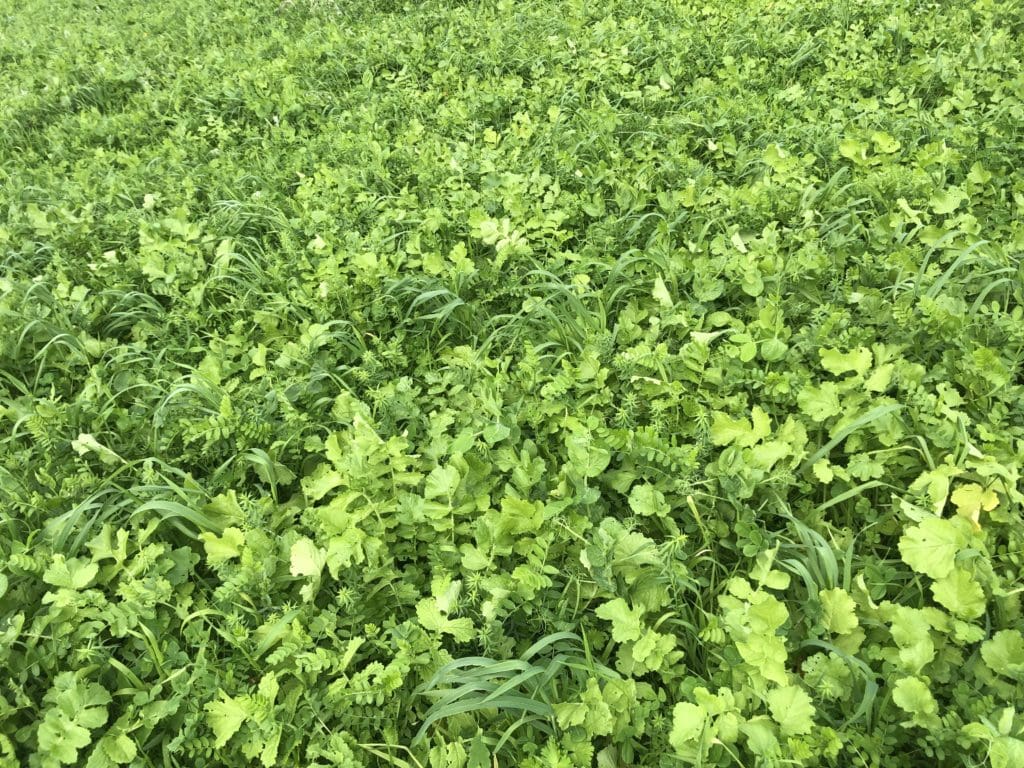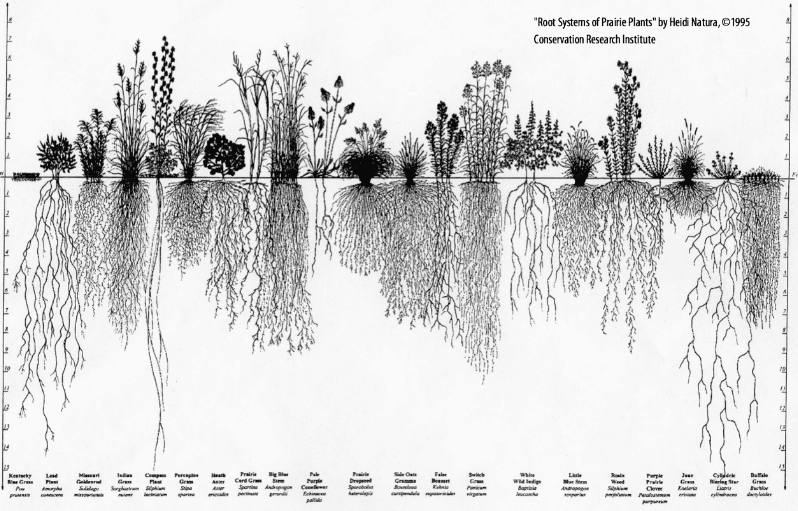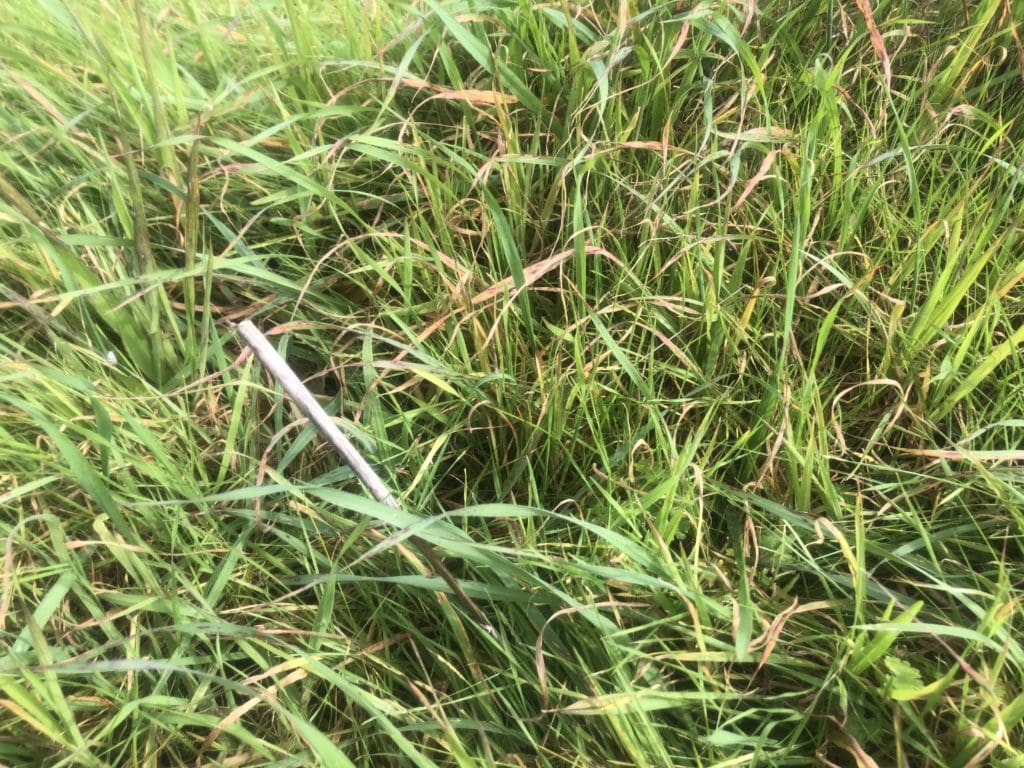When Is the Best Time to Graze Multi-species Pastures

One question I often hear asked at this time of year is – when can we graze the paddocks that have been sown with a multi-species mix? The answer is of course, it depends! There are a few variables to consider – how early did you seed, what is the makeup of species in your mix, is building soil your main priority or do you need the forage for livestock, would you like to let some species set seed…?
In many ways, the decisions we make about when to graze are based on how different plant types grow and what they offer at each stage of growth. All plants take a little while to get going following germination, simply because they don’t have lots of leaf surface area to catch sunlight energy and haven’t developed extensive root systems to access soil water and nutrients. Production capacity increases as plants grow bigger and continues to do so until they go into reproduction, or conditions become unfavourable. Annual species have to complete their lifecycle within a season so they tend to establish faster than perennial species.
Generally speaking, forage quality is better when plants are younger, but there is less of it. Palatability remains good throughout the vegetative growth stages but gradually declines as plants mature, then drops off rapidly as they go to seed.
Root exudation on the other hand, which drives all important soil building microbiological activity, really kicks in during the more developed vegetative stages and continues on into flowering, but drops off completely at seed set.
Following the autumn break, conditions are optimal for the vegetative growth of cool season species. It is always beneficial to give plants adequate time for establishment, but even more so with those that aren’t designed to handle regular grazing. Ideally, we want to keep stock off paddocks that have been seeded with a diversity of perennial and/or annual species until the plants have put on some substantial growth and developed good root systems. If we go in too early, we set growth back, hinder the establishment of slow growing perennials and take out annual species with terminal growth points before they contribute much in the way of root exudation or biomass.
Useful strategies to enable better establishment and to get more out of our multi-species seedings include:
- prioritising some paddocks for multi-species establishment each season
- choosing the right species for your situation<
- sowing multi-species paddocks early in the season
- combining herds, dividing up paddocks, lowering stock rates, timing your lambing/calving for a bit later in the season etc… to optimise grazing patterns.
Heading into winter, we want good plant coverage and well-developed root systems in place to protect the soil from driving rain and prevent erosion. Water logging can also be an issue. A good stand of vegetation takes up water and improves drainage. As the soil is wet and plant growth is slower at this time of year, it is better to keep grazing periods short and allow more time for pasture plants to recover.
In spring, the days get longer, conditions begin to warm up and rainfall subsides. Pasture species grow rapidly and then start to set seed. At seed set, plants use substantial amounts of water and both forage quality and root exudation tend to decline sharply. We can repeat graze to keep plants from going to head, initiate vegetative regrowth and maintain soil moisture longer into the dry season.
Regardless of our objectives and constraints, enabling good establishment, promoting strong vegetative growth and delaying seed set will ultimately improve our overall production capacity. We have to do our best to manage multi-species pastures with this in mind.





The second picture was taken early July and the crop had been seeded in early April – it was grazed at the end of July so around 4 months of growing time.